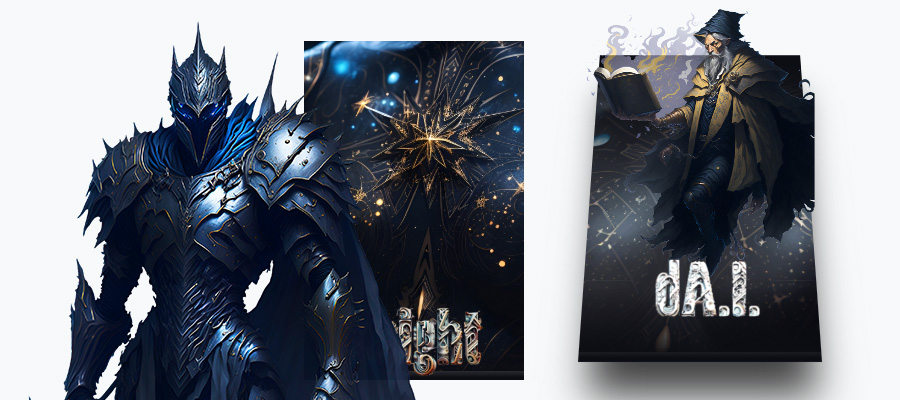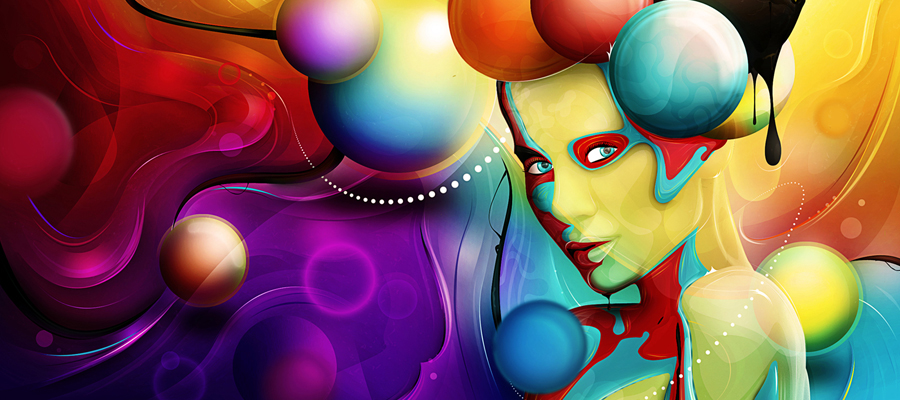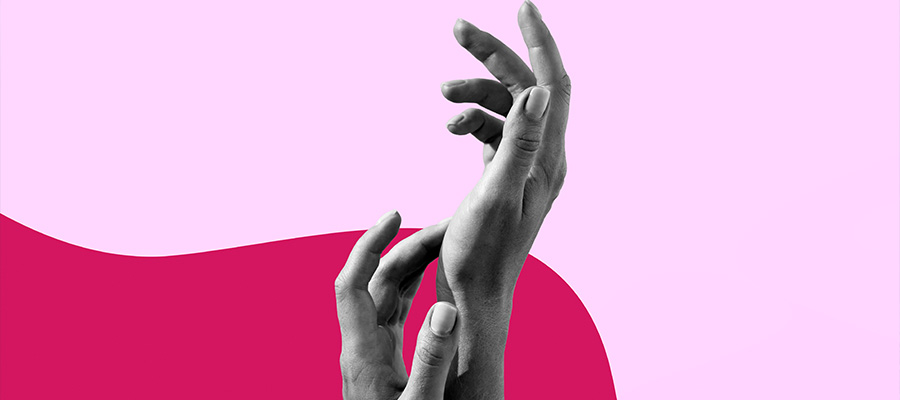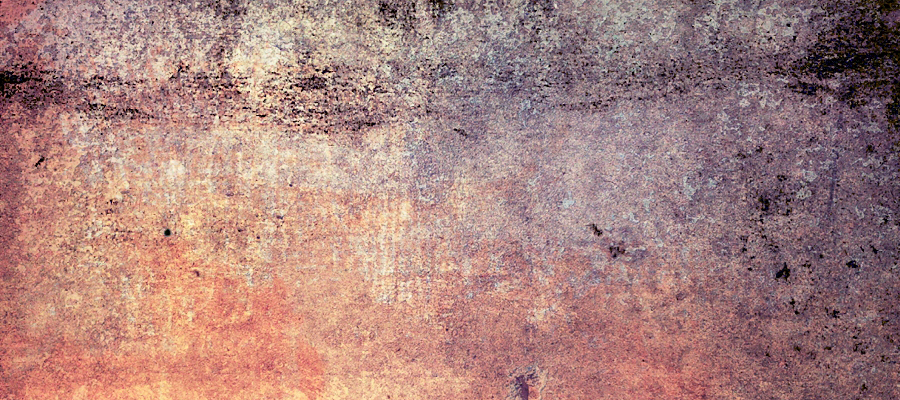In this case study today we present the workflow of a piece i did some while ago, after watching the latest Batman Movie (the Dark Knight). I really like the Joker character, but I did not want to do a simple portrait of him, so i gave myself the liberty of sketching the female version of him. This is also a Photoshop tutorial because all the steps are very well explained, I will cover some useful and tricky techniques I have been using for a few years. I recommend this tutorial to Photoshop users with relevant advanced skills.
The Sketch
I started off by rummaging through my sketchbooks, references and image banks looking for inspiration and/or old live drawing sketches. For more realistic proportions, I try to always sketch from photo reference and/or live models. I keep most of the visual research I do in sketchbooks.
Tip: When in a hurry, I often revisit old sketchbooks for reference drawings, ideas and posing. At this point, I was looking for a strong pose that was interesting and a bit unconventional. I wanted the image to be all about the character and the fact that she was an asylum inmate. I found an old blue pencil sketch and scanned it into Photoshop. I then used Photoshop and my favorite drawing brush to quickly clean it up.

Composition
Once the sketch was clean and in Photoshop, I removed the blue rough layer, lowered the opacity of my sketch layers a little and started working on creating an interesting composition. I played around with character placement for a while and settled for a lower right corner position, with part of the character off frame. I also angled the drawing to make it more dynamic. Once this was done, I used a heavily textured brush to establish my background wall, graffiti and light setup. The character would be resting against a simple wall lit from the top as if she was in a dark, gloomy asylum basement or cell. I am not looking for clear details at this point, just overall masses.

Tip: I made a simple easy brush using a standard round sharp edge brush and added pressure sensitivity to it for transparency and size. Be sure that the airbrush button is set to off and flow set to 100%. If not, it will dampen the tool and make it difficult to control. I find that when you use it at an opacity level between 75 to 90%, it reacts a lot like pencil on paper. It produces nice dark grayish tones and, because of the transparency, you can build up values with it... just like a pencil. Most of my sketch work on computer is done using this brush.
Mood
Once I was satisfied with the overall composition, I started introducing mood into the image. After a couple of tries, I settled for a greenish tone to parallel the color scheme of numerous modern day horror flicks.

Flat colors
Once I was happy with the overall mood using the lasso tool, I decided to apply a flat layer of colors to establish how I would approach the character. I picked the color scheme based on some Joker references I got from DC books lying around my office. I tried to stay true to the original DC character using purples, oranges and greens, with the white painted face and red lips.

Tip: Throughout the whole image painting process, I also used this layer as a quick mask selection / puzzle matte the layer in order to rapidly be able to isolate certain areas of the image. It speeds up the work, since I can just magic wand a color and paint within the selected area.
Volume
I added a layer over my work area and start painting in more information on the character. For this I use a sharp edge standard round brush with an opacity of around 50%. I have a tendency to pick one of the background or environment color as a base for my shadows and start building the volumes by letting the color add on top of itself.

Tip: Once I have a relatively good base, I will pick most of my other colors from the image itself and the color variations the opacity settings have created for me. This way I am sure that the palette will stay pretty consistent throughout the painting process. Another good way to keep the palette consistency throughout a more complex image is to make yourself color swatches on a separate layer in your image to reference the pure colors that populate your work.
Tightening of the character
Since I wanted the character to be the main focus of this piece, I started adding more details to it right away. Starting with the face and eyes, I worked on the character's expression very early on to make sure I had the impact I wanted. The character needed to feel dangerous, dark and strange. I then moved on to the rest of the figure and cleaned up my more sketchy paint work from before. At this point I felt I would lose the right side of my character into the shadows, so I added another light source to the image visible through the apparition of a bright blue rim light on her leg, elbow and body.

Color balance
After a few hours on the character, I stopped and took some time to analyze the image and noticed the color palette was kind of neutral and cold. It also lacked uniformity and richness. The lighting was also a bit flat. In order to bring the image back on track, I created a new lighting and color layer with the ramp tool based on a bright orange color and added it over my painting (using the overlay layer setting) and played around with this layer's opacity until I found the intensity of light and color balance I wanted. This brought back warmer tones to the light, as well as emphasized the contrast between the light and dark areas of the image.
Tip: Using a colored ramp is useful as it washes the whole image with different values of a single color... instantly harmonizing the entire color palette.

Smoothing
I then went back to painting the character and upping the quality of my paint strokes. Up until now, the strokes were quite visible and rough. I used a textured smudge tool with a pressure of 40-60% to even out and blend the colors on and around the character. At the same time, I also alternate and use a simple brush and continue to add detail to the overall character.
Tip: Using a fairly high pressure value with the smudge tool is a good way to fake strokes done with traditional paint and brush. It is also a good way to erase leftover line work from the original sketch. Playing around with the smudge pattern and brush can even imitate brush bristles in the paint.

Background
After spending many hours on the character, it wastime to set it aside and get the rest of this image on its way as well. In order to obtain fast results, I decided to use a couple of matte painting tricks. I quickly built a patchwork decrepit wall from photo elements in my image bank. I then distorted it to fit the image's perspective. Since the background was fairly neutral, killing the saturation of that wall layer and applying it as an overlay layer instantly gave richness to the wall. All that was left was for me to add was painted highlights and little drop shadows to make the wall fit with the scene lighting. The ground was another story... I started off with a dirty concrete texture, but found it lacked character. Looking at other reference images of old abandoned factories and laboratories, I noticed a lot of tile work. Based on this idea I decided to give it a try. I created my tile texture using a textured brush with a wide spacing to make sure the pattern would not overlap. Once I had a nice pattern filled layer, I used Photoshop's supplied bevel layer effect to give my tiles thickness. I froze that layer and distorted it into position to obtain the tiled floor. The floor needed some highlight and shadow paint work to fit with the set.

Lighting fix
I used a dark ramp layer, applied as Hard light, to emphasize the dark area at the bottom of the image as if the light source was a constrained spot with a very limited cone of influence. This helped focusing the image on the character's face and not her entire body.
Tip: I try to work in a non-destructive fashion as much as possible. I always use layer masks to control overlaid textures and not the eraser... much easier to correct mistakes this way if you have to make unforeseen changes. I also keep alternate version of textures, so I can quickly refer to them or give the client options of the same image.

Enhancing the skin and hair
The background was more or less complete at this point, so I returned my attention to the character. The smudge tool produces great smooth skin surfaces, but they were lacking texture. I discovered a while back, while touching up photography, that using image references of sandy surfaces is a great way to add skin grain to smooth painted flesh. I went to my image bank, found a nice sandy picture and place it over the skin areas that I wanted to detail. Using overlay or soft light, a light opacity (around 30%) and a layer mask, I kept adding skin grain only where the image needed it.
Tip: If the sandy color pushes the skin tone too much towards orange, changing the saturation helps keeping only the sand's random grain and will not over-correct the skin color. The hair was a little more straight forward to work on. I added more paint using a custom dots brush and a combination of smudge tool to blend the colors and sharpen tool to add sharpness to individual strands.

Final touches
As I got closer to the final image, I did an overall pass to add all the final little details and tweaks that I thought the image needs. First, I started by adding a quick pattern to some fabric elements to simulate different fabric types. For this step I used the same brush I did the floor with. This layer was dimmed in transparency and used as an overlay to make sure it felt as part of the fabric and not a superimposed texture. I then moved on to the hair. The hair was brighten on the top of the head with golden highlights to reflect the yellow light source somewhere on the ceiling. It was done with a simple airbrush painted layer using the color dodge layer setting. I then played with the layer's opacity until I got the highlight intensity I wanted.

Final color balance
Just before saving the image in its final format, I added one final color correction. I dropped the saturation a little, because I found it a bit too aggressive, and I then used a color balance layer to add greens back into my mid-tones in order to even the image more. I took a step back, and realized I was not satisfied with the graffiti in the background... it lacked punch and felt way too painted and sketchy. I selected the layer, copied it on itself, inverted the result before putting the find edges filter on it. This gave me a gritty version of my previous layer with very pronounced edges. I overlaid this result on the original text layer and it brought out details in the text just like if it had been painted on the wall with a cheap brush.

I find color dodge works really well for highlights. It pops out colors well, while retaining values of the color below and adding values from the highlight colors.
I moved from there to finishing the brass buttons, buckles, lips highlights and golden sheen on the purple cloth. All these details where done with the same trick... on a color dodge layer. As you think of it, most of the details I am talking about are in fact light reflection on surfaces, so this technique works very well on all present cases. The last thing I did was to paint in better shadows to help the character integrate with the environment. I used a dark blueishgray on a hard light layer to keep my background information and not burn it to black.
Conclusion
That’s about it really! I tried to make it sound complicated but it’s really not.





















